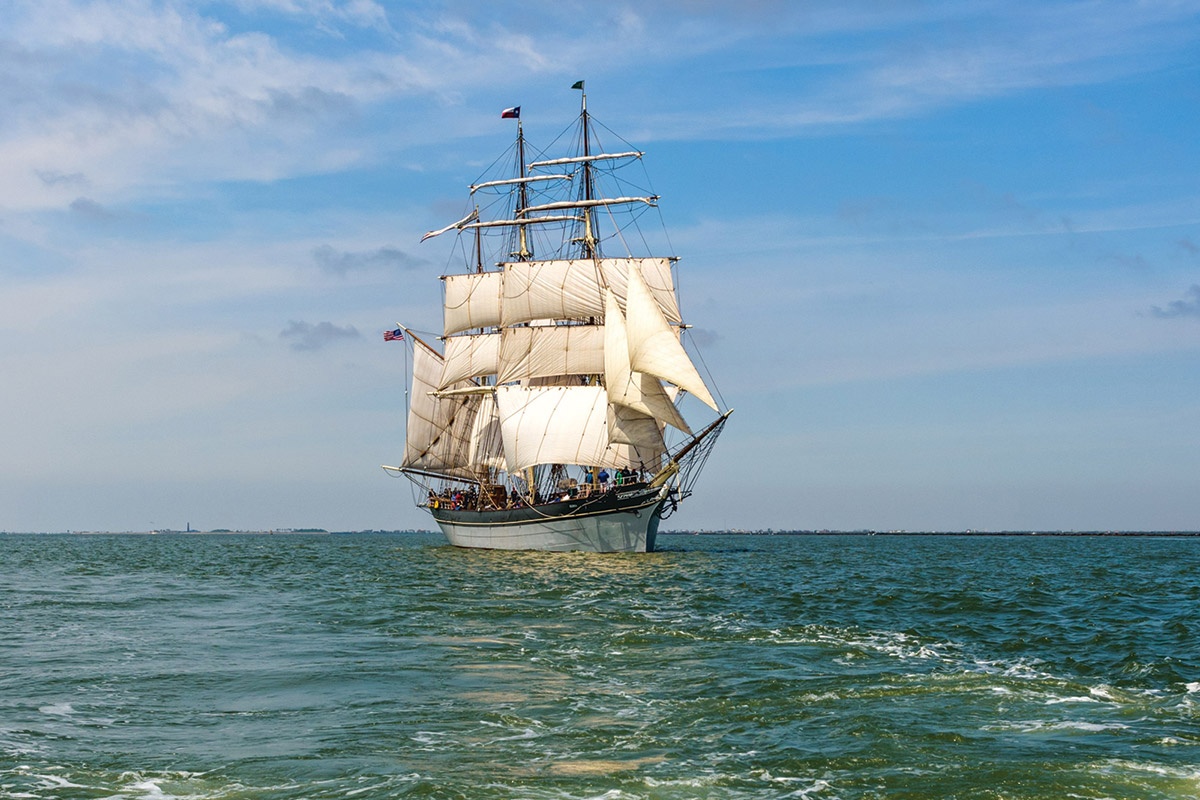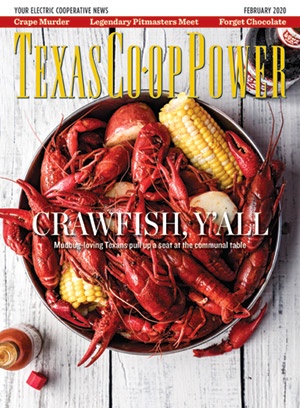In the late 19th century, a cargo ship like the Elissa, now the Galveston-based official tall ship of Texas, sailed with a crew of fewer than 20. The Elissa hosts a sail training program that draws groups of up to 120 for six-hour training cruises.
In its permanent home at Galveston’s Pier 21, the Elissa is maintained year-round by certified volunteer crew members who upgrade their skills by working the annual cruises. Others interested in learning the techniques required to sail the ship can take part by invitation.
Last spring, I accepted an invitation to join the group aboard the Elissa. Launched in 1877 in Aberdeen, Scotland, the three-masted, iron-hulled Elissa is one of just three ships of its kind in the world. Its 19 sails cover more than a quarter acre; and from the tip of the stern’s boom to the tip of the boom on the bow (sparred length), it measures 205 feet.
The crew that helps maintain the Elissa (40 members of our group) undertakes the seven-month course and spends 130 hours with the Galveston Historical Foundation, training on board and taking proficiency exams. The volunteers put in almost a million dollars’ worth of labor annually, according to port captain Mark Scibinico.
Mast captain Todd Grove offered a tutorial on technique and the meaning of basic commands. For example, stop pulling on ropes when you hear, “That’s well on the halyard.” I jumped at the chance to pull one of the ship’s 183 lines.
“Every single rope and sail work together,” says crew member David Bowers of Galveston. “You really have to stop and listen to the people bark these orders to understand what they’re saying.”
“It was amazing to watch all that manpower, watching them quickly climb up the masts,” says Ashley Shaw, a passenger from Birmingham, Alabama. “Not knowing the lingo made me appreciate their work even more.”
On our cruise, there was plenty of opportunity to explore the ship. I mostly hung out on the main deck admiring the teamwork. As we sailed down the Galveston Channel, Grove pointed out a small buoy in the distance. When we passed it, we would be sailing the Gulf of Mexico.
That buoy also signified rougher waters. The trick for avoiding seasickness is to look at the horizon, but that’s not easy on a cloudy day. While conversing with a passenger, I felt my stomach rumble, as I sometimes experienced as a child.
Back then, my mother was prepared with Dramamine or BioBands to combat motion sickness. I had neither.
During orientation, we were told to let loose over the edge if we felt nauseated. The only request? Do it downwind. As I neared the ship’s edge, I glanced at volunteer Aaron Stephens.
“Is this a good spot to throw up?” I asked.
“Yeah, not too bad,” Stephens said.
I leaned over the edge while he brought me some crackers and an apple. Eating was the last thing on my mind, but he’d seen this before. “It sounds counterintuitive, but if you get sick, keep eating and drinking,” Stephens said.
About halfway through the voyage, trainees unfurled the sails so we could head back toward Galveston. Despite my queasy stomach, I marveled at the sight. Volunteers scaled the rigging, navigated narrow walkways, leaped from one platform to another, untied ropes and let the sails fly. Commands bounced across the deck, and the passengers ceased talking and watched in awe.
After we reversed course, my seasickness returned. I went to my familiar spot but soon felt a tap on my shoulder.
“When you’re able, can you move to the other side?” a volunteer asked. She reminded me I was now facing upwind.
I groggily thanked her and went across the deck.
Even though my stomach was dancing, I loved the trip. Between the tall sails, the crew working together and hearing stories from the passengers, a ride on the Elissa is an exceptional experience.
Captain John Svendsen commends the volunteers for their work. “All the living history comes to life only with people,” he says. “This ship is a static piece of iron, rope and canvas without people.”
The visitors came from all walks of life, with their sunscreen, long sleeves and closed-toe shoes, to sail the Elissa. “That was really neat,” Shaw says. “You see older generations next to teenage kids, and they’re all so nice and friendly. They’ve got some great stories to share.”
Writer Joey Held looks forward to more rope-pulling adventures—though next time he sets sail, he’ll remember his Dramamine.


